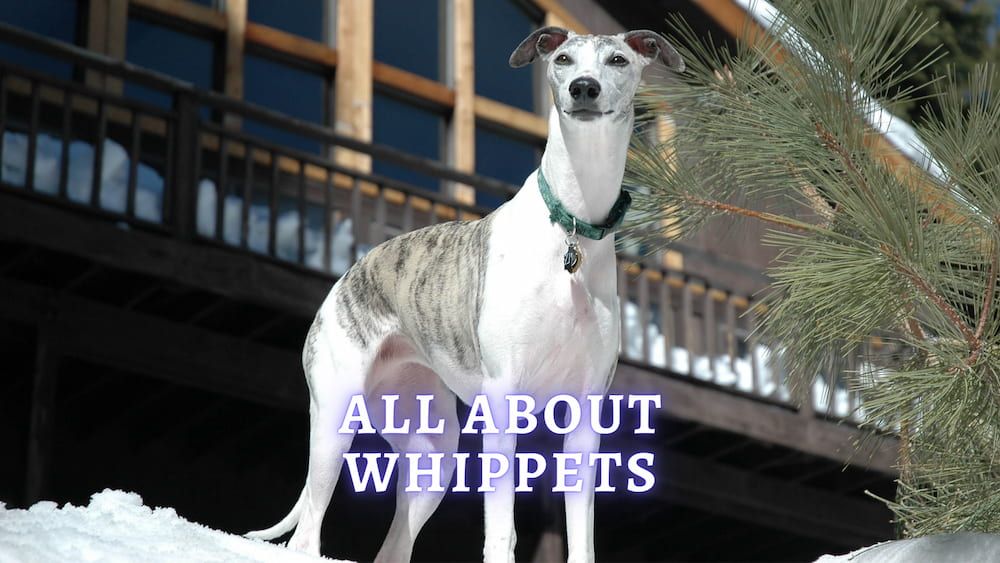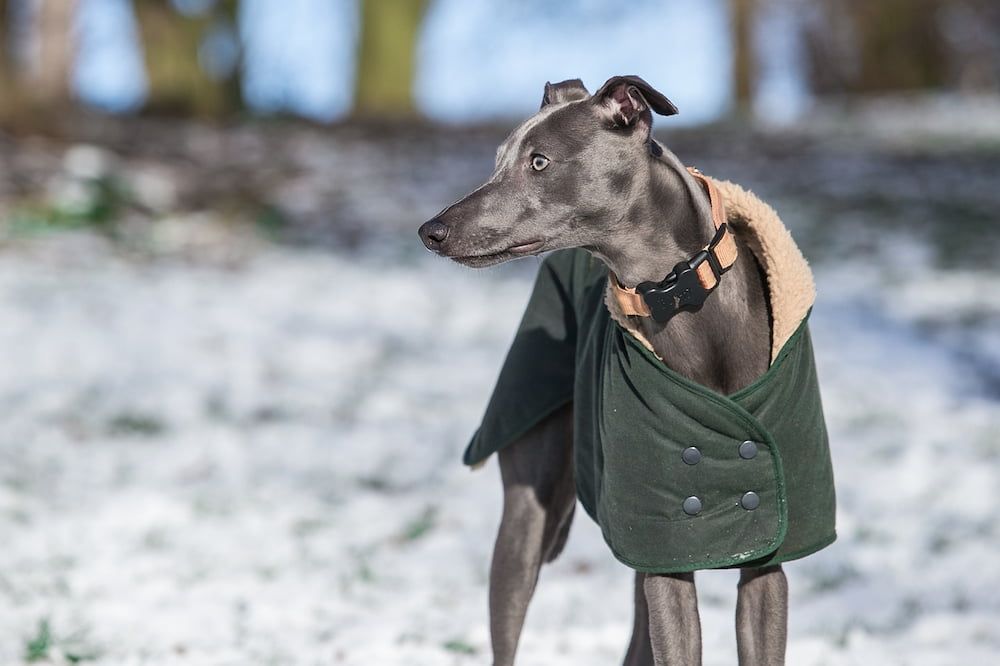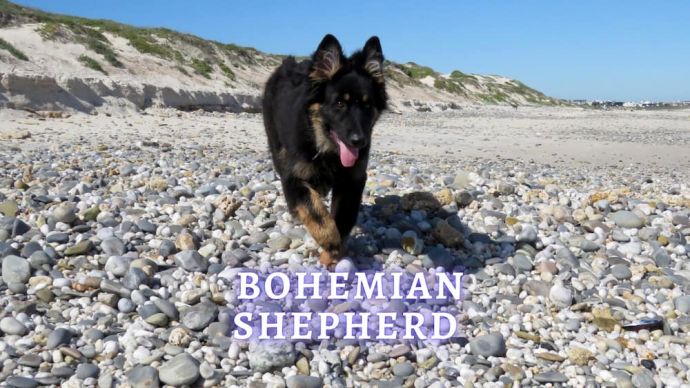Whippet: Breed Characteristics, Personality, Health and Training
Written by:
Author: Seb Jenkins
Seb is a professional SEO writer with a degree in Journalism, he has five years of experience in writing and editing. Seb specializes in topics like dog and cat breeds, aquarium guides, and pet care. He is passionate about educating and entertaining animal owners worldwide. In his spare time, Seb enjoys writing fiction novels.
View all 83 articlesLearn about our editorial process and veterinary review board.
Viewed: 63
Updated on: 06/08/2023
Whippets are known to be kind and gentle bundles of joy around the family home, so it is certainly no surprise that you are researching them. They can also be wild and exciting once you take them outside, which is something to be aware of.
For anyone looking to get a Whippet, or anyone who recently has, it is essential to research information about the breed to ensure you are fully capable of taking care of your new best friend. Fortunately, we have created an all-you-need-to-know article on the Whippet below.
Characteristics Whippet Puppy
The following are the main characteristics shown by the Whippet:
| Characteristic | Description |
| Height | 18-22 inches |
| Weight | 25-40 pounds |
| Lifespan | 12-15 years |
| Type | Hound dog |
| Coat | Very short |
| Colors | Fawn, Black, White, Brindle |
| Shedding | Infrequent |
| Temperament | Gentle and friendly, but wild outdoors |
| Intelligence | High |
| Social skills | Good with kids, dogs, and cats |
| Barking | Infrequent |
| Children | Good with kids |
| Energy levels | High in bursts |
Breed History
The whippet was initially bred for hunting purposes, and their specialty was hunting games in open areas because of their devastating speed across open ground.
Plenty of depictions of a small greyhound-looking breed dating back to Ancient Egypt. This same small-looking greyhound was then used for hunting rats in medieval England.
It was in 1610 that we saw our first mention of the term ‘Whippet’, and the breed quickly became known as the Snap Dog due to how fast it snapped up its prey.
Although it is not known for sure whether they are small greyhounds or whippets, these types of dogs can be seen in famous paintings by Jean-Baptiste Oudry and Pompeo Batoni in the 1700s.
Fast forward to the 19th century, and racing was a trendy sport and pastime in England, with Whippets being among the stars of the showup North and in Wales (albeit not in the rest of the country). At the time, there were two types of Whippet – the one we see today and a Whippet with a rougher coat due to Bedlington Terrier crossbreeding.
They became so popular and loved for its prowess on the tracks that it was exported globally as a money-making machine.
Modern-day Whippets first emerged in 1891 when the breed was recognized by the Kennel Club – although it was recognized in 1888 by the American Kennel Club.
Today, the Whippet is the 55th most popular dog breed in the world (AKC).
Whippet Facts
- The first Whippet breeding came from 1800s English coal miners in the North of the country.
- Whippets can run up to 35 miles per hour.
- Whippets have been known to ignore electric fences in pursuit of whatever they want to chase and refuse to be stopped by a shock.
Temperament and Personality Whippet Puppies
There are two sides to a Whippet. The pet when it’s at home and the dog in the outside world. The Whippet is friendly, gentle, and quiet when lounging around at home. However, they can become far more intense when outside due to their high prey drive. They will be off like a shot if they see something moving that piques their interest. As such, you need a fence around your yard and a strong leash for walks.
There is a clear plus side to how alert the Whippet is, and that is their talent as a watchdog. They are not often found barking and will more than likely be friendly to intruders, but they will at least remain alert for you.
The temperament of your particular Whippet depends on a number of things, including their parents, how well they have been trained, and how socialized they are.
If you want the best chance of getting a nice temperament, then choose the puppy in the litter that falls in the middle of the personality road. Not the one who is hiding at the back and not the one fighting its friends. You should ask to meet one, if not both, of the parents to see what their temperaments are like too. Meeting siblings and relatives also can’t hurt.
It is important that you socialize your temperament Whippets from a young age to get them used to people, animals, and the sights, smells, and sounds of the world. The more socializing and training when they are young, the more well-rounded they will become as older dogs.
Puppy kindergarten and dog parks are great ways to introduce them to other dogs. You can also take them on walks around busy parks and introduce them to friends and neighbors.
| Category | Rating (out of 5) |
| Adaptability | 3 |
| Adapts to apartment living | 5 |
| Energy levels | 5 |
| Adapts to being alone | 2 |
| Tolerates cold weather | 1 |
| Tolerates hot weather | 4 |
| All-around friendliness | 5 |
| Affectionate with family | 5 |
| Kid-friendly | 5 |
| Dog friendly | 4 |
| Friendly with strangers | 4 |
| Health and grooming | 3 |
| Shedding | 2 |
| Drooling | 1 |
| Easy to groom | 5 |
| Easy to train | 4 |
| Exercise needs | 5 |
| Intelligence | 4 |
Activity and Exercise Requirements
We recommend that you give your Whippet purebred dogs two walks per day of between 20 and 30 minutes, keeping them on a leash at all times. If you let them off the leash and they see a rabbit or bird in the distance, you won’t be able to stop them from chasing it.
For walks in cold weather, your Whippet will need a coat or sweater of some kind to keep warm. They cannot remain comfortable outdoors in the cold for long periods of time, so remember that.
You can also give your Whippet some additional exercise in the yard, but you need at least a five-to-six-foot fence in order to keep them contained. Anything else and they will simply jump over to chase something. Underground electric fences also won’t work because Whippets are known to accept a shock in order to chase things.
When running around off-leash in the yard or a fenced park, your Whippet will likely use up their burst of energy within three minutes or so. Just be careful not to over-exercise them as it can be a strain on their joints.
We recommend five minutes of exercise for every month your puppy has been in the world. So if your puppy is six months old, aim for 30 minutes daily.
Feeding and Diet
We recommend feeding your Whippet a high-quality brand of dog food, or something you prepare yourself at home. Watch the calorie count and ensure it matches the recommended levels. We recommend opting for between 1 and 1.5 cups of dry dog food per day but split that into two meals.
You should always keep an eye on your Whippet to make sure they are not becoming overweight. As with any dog, your Whippet’s diet will change as it grows from a puppy into an adult and then into old age.
It is always a good idea to ask your vet about your specific Whippet during your next check-up. Ask them for recommendations as there is some variation from dog to dog regarding Whippets.
Grooming and Shedding
We recommend weekly brushing for your Whippet using a glove or curry brush to remove their sparse shedding hair. Generally, they only need a bath if they have rolled around in something as their fur is so short.
Unfortunately, while the short coat is a blessing for shedding and washing, it can present some risks to your Whippet. They are known to pick up odd injury, like cuts and scrapes, due to the lack of protection around their body. Sometimes, they may even need stitches, so be sure to check them regularly.
We also recommend investing in dog toothpaste and brushing their teeth twice or thrice weekly to avoid dental problems. If you want to give them a daily brush, then even better!
Nails could sort themselves out while the Whippet runs around, but if they are noticeably long, feel free to trim them once or twice monthly. If you can hear their nails clicking on the floor, it is time to trim them.
We recommend starting all of these things as early as possible. The earlier you get a puppy used to the feeling of baths, brushing, and nail clipping, the sooner they will sit back, relax, and let you do your work.
READ MORE: How to Trim Overgrown Dog Nails?
Known Health Problems
The Whippet is usually a healthy breed with an impressive lifespan of 12-15 years. Of course, you still need to keep them healthy and take them for regular check-ups at the vet. Some health conditions are more common than others with the Whippet.
Mitral Valve Disease
The one-way valve on the left side of your Whippet’s heart can wear out over time leading to this disease, with the earliest sign being heart murmurs. Lifelong treatment plans can be developed after a vet visit.
Gastric Dilatation and Volvulus
This can be life-threatening, as your Whippet’s stomach fills with gas and twists on itself. This requires surgery to fix the problem, so book a vet appointment if you see symptoms like vomiting, restlessness, drooling, loss of appetite, and/or a distended stomach.
Lacerations
Their short coats do not provide much protection, and that can lead to nasty cuts, with lacerations more commonly found on the legs. Bleeding wounds should be treated with a clean cloth and a trip to the vet.
Von Willebrand Disease
This can cause clotting and lead to bleeding from the nose and gums and consistent bleeding after surgery.
Deafness
Some Whippets can be born deaf due to a genetic defect. This could be why your puppy is not responding to your voice. Book a vet appointment to find out more.
Responsible breeders should track any health concerns within their breeding program. So be sure to ask any breeder you use about this stuff.
RELATED: Deaf Dog Training
Training
Fortunately, Whippets are easy to housetrain and are great crate trainers. Because they view the crate as their own safe space, they won’t use it as a bathroom or destroy things there.
We recommend using training methods based on positive reinforcement. We recommend the three Ps of positive reinforcement, patience, and praise. They very much have a mind of their own, so you need to use these tools to train them. Never yell at them; otherwise, they will stop listening to you.
The one thing it is near impossible to train out of a Whippet is their tendency to want to chase things, so remember to use high fences and a leash when walking.
We recommend early socialization for your whippet with other dogs, animals, and people as early as possible. The more they grow up with other animals around, the more receptive they will be to them. Of course, you want your Whippet to be friendly with other dogs, even if it’s just while you are out and about on walks. Having your Whippets around other pets makes for friendly dogs.
Adoption and Breeders
Like most dog breeds, the most direct route to sourcing a Whippet is via a breeder. This is especially the case if you have your heart set on a Whippet puppy. There are a number of experienced breeders out there who provide regular litters.
However, we urge you to check your local adoptions and rescue centers first to see if you can give a home to a lovely Whippet. You should check out the Whippet Club.
To find the best breeder for Whippet puppies, we recommend you research your local options online. Each breeder should have reviews to see who has a good reputation and who should be avoided.
READ MORE: How Much Does It Cost To Adopt a Dog?
Conclusion
And there we have it, our complete guide to the Whippet dog breed. This should give you all the starter information you need to confidently make a decision on whether you want to adopt or purchase a Whippet.
Feel free to refer back as you welcome the new dog into your home for tips on training, health, exercise and more. We wish you all the best with your new best friend!
People Often Ask
Is a Whippet a good pet?
A Whippet makes for a very friendly and gentle pet around the home, albeit with a wild side once you head out into the world for walks. Some would call that the best of both worlds.
What 2 breeds make a Whippet?
The Whippet was originally bred from terriers and small English greyhounds.
Is a Whippet the only dog that cannot bark?
Whippets are capable of barking, it just isn’t in their nature as much as many other breeds.
Do Whippets bark a lot?
Whippets are not frequent barkers at all.
 Dog Breeds Irish Terrier Breed Information: Health, Activity Level, Temperament and Personality
Dog Breeds Irish Terrier Breed Information: Health, Activity Level, Temperament and Personality - 1937
- 1
 Dog Veterinary Tips Why is my Dog throwing up: Causes and Preventing (Veterinary Advice)
Dog Veterinary Tips Why is my Dog throwing up: Causes and Preventing (Veterinary Advice) - 23424
- 5
 Dog Care Why Is My Dog Bleeding From Its Butt? Causes and treatment of rectal bleeding in the dog
Dog Care Why Is My Dog Bleeding From Its Butt? Causes and treatment of rectal bleeding in the dog - 22076
- 0
 Dog Care My Dog Keeps Scratching His Mouth: Reasons Why Your Dog Scratching Face
Dog Care My Dog Keeps Scratching His Mouth: Reasons Why Your Dog Scratching Face - 17561
- 1

























